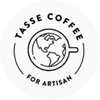How does the coffee production line work?
Every time you go to a cafe to buy a cup of coffee, or buy specialty coffee beans when traveling, have you ever thought about how the production line behind it works?
The coffee supply chain is a series of activities and participants from the planting, harvesting, processing, buying and selling of coffee beans to the final consumption. This supply chain includes coffee farmers, traders, roasters, retailers and consumers, which are closely linked.
🌏 Coffee Planting and Harvesting
The coffee supply chain starts with the planting and harvesting of coffee beans. Coffee trees require specific climate and soil conditions to grow, mainly in tropical and subtropical regions. Farmers plant coffee trees, patiently wait for the coffee cherries to mature, and then harvest them. This process requires patience and expertise to ensure the quality of the coffee beans.
🌏 Coffee bean processing
After the coffee is harvested, the beans need to be processed. There are two common processing methods: natural and washed. Natural processing is to dry the coffee beans in the sun, and then remove the outer pulp and skin. Washed processing is to soak the coffee beans in water, remove the pulp and skin, and then ferment and wash. The processing process has an important impact on the final coffee flavor and quality.
🌏 Coffee trading and distribution
Processed green coffee beans are usually purchased by coffee traders, who purchase the beans from farmers and then distribute and sell them. These traders operate globally, exporting coffee beans to other countries or supplying them to domestic roasters. They handle logistics, quality control, and price negotiations.
🌏 Coffee bean roasting and packaging
After arriving at the roasting plant, the coffee beans will go through the roasting and preparation process. During the roasting process, the flavor and aroma of the coffee beans change from the original green color of the raw beans to caramel or dark brown. Roasters roast coffee beans into different tastes and flavor characteristics according to different roasting degrees and flavor designs.
🌏 Coffee retail and consumption
The roasted coffee beans eventually reach the hands of retailers and are then brewed by baristas for customers. Coffee producers and coffee bean buyers usually use strict cupping techniques to control the quality process to ensure that the freshness and quality of the coffee beans are protected during transportation.




